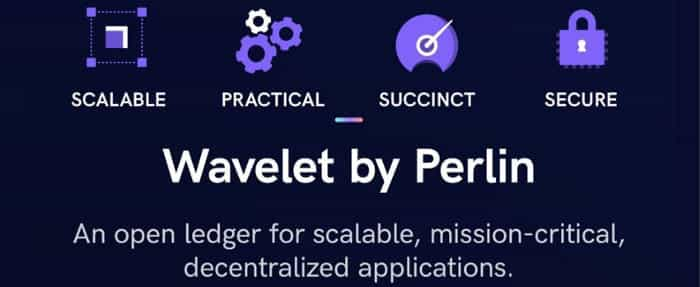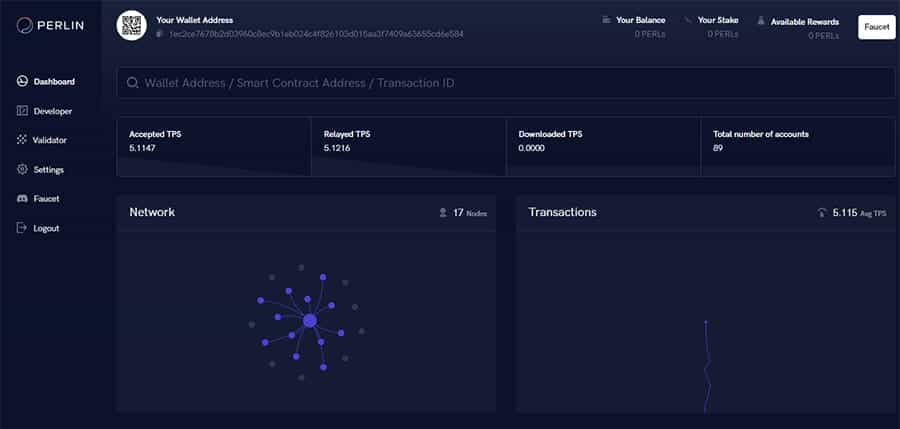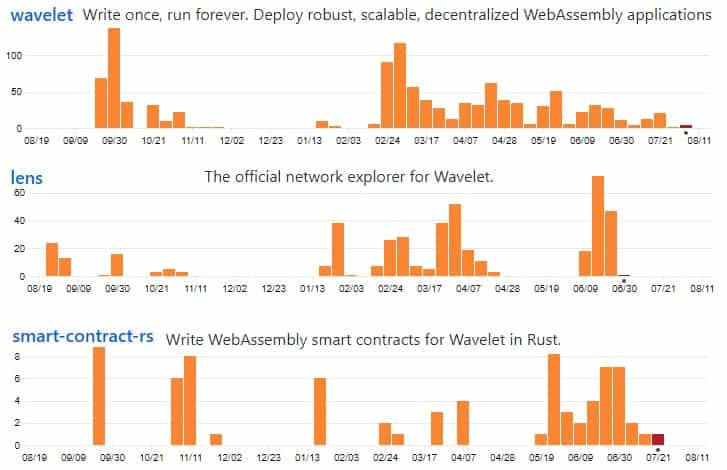Perlin Review: Leaderless Blockchain, Lightning Fast Transactions
Perlin (PERL) is the next high profile token offering slated to take place on the Binance Exchange - and it is already generating quite a bit of interest.
The project claims to be completely "Leaderless" and is focused on developing a high throughput blockchain. This is more than just a pipe-dream as they have already had quite a bit of success in their initial testing phase.
However, should you really consider it?
In this Perlin review I will give you everything that you need to know about the project. I will also take a look at the prospects for the PERL token and what to look for.
What is Perlin?
The Perlin Project began in 2018 and has rapidly evolved to the point where it features over 30,000 transactions per second in its Directed Acyclic Graph (DAG) based Leaderless Proof of Stake (LPoS) blockchain.

The project will soon launch its initial exchange offering (IEO) on the Binance Launchpad, making it the 8th Launchpad IEO. In addition to the underlying blockchain and IEO, Perlin is also launching a decentralize compute layer they are calling the Perlin Network, which will act as a marketplace for the exchange of computing resources.
The combination of speed and the computing resource marketplace is ideal for Perlin, which is being touted as a solution to dApp development for those projects requiring a large amount of computing resources.
Perlin’s Value Proposition
Perlin’s DAG-based decentralized ledger is currently in its testnet phase, dubbed Wavelet. It utilizes both gossiping and querying, as well as an overlay network.
This all leads to a family of consensus mechanisms giving us a partially synchronous network from troublemakers that try to jeopardize the consistency and fluidity of the network.

One of the use cases put forward for Perlin is as a smart contract protocol, and it is leveraging WebAssembly to make its smart contracts quick and easy to use. The very first implementation will be in distributed computing through the Perlin Network.
This is a distributed computing platform that was built on top of Perlin’s DAG. It will turn underutilized computing resources into commodities that can be combined into parallel batches of computing power. This can be useful for projects that need to analyze big data, or for artificial intelligence and machine learning tasks that are computationally intensive.
The platform was created with three major components. These are the self-audited distributed ledger, cryptographic proof of computational resources, and a framework for highly parallel blind computing.
The Perlin Network is unique among platforms seeking to pool computing power in that it will be able to use basic sources such as smartphones and gaming consoles, as well as more powerful computers and servers. The resources made available by each participant are quantified through a cryptographic hash function.

This hash function is necessary to make the computing network trustless. The resource providers will be providing proof of the resources they have available before offering it to customers, and this is accomplished on the Perlin Network through a mechanism called Proof of Compute Availability.
By quantifying the resources being made available on the network customers will be able to purchase precisely the resources they require, much like centralized cloud networks such as Amazon’s AWS EC2.
The addition of a decentralized token is meant to help commoditize computing resources and to assist in balancing global supply and demand for computing resources.
The PERL Token
The native token of the Perlin Network is known as PERLs, and they are used to facilitate the transfer of value on the network and to make payments for services. Anyone who wishes to access the computational resources on the Perlin Network will need to use PERLs.
Customers who are buying resources will register and add a fixed pool of PERLs as a mining reward for those running the tasks. Tokens will also be paid as a reward for transaction validators on the blockchain.
Initially, the PERL is being released as an ERC-20 token, but it will transition to a native token once the Perlin mainnet is launched.
Team, Advisors & Investors
The Perlin team has been growing rapidly over the past year and is now comprised of a total of 19 members, most of whom are either blockchain developers or web developers. The core of the project, however, are the three founders; Dorjee Sun, Kenta Iwasaki, and Ajay Prakash.
Dorjee Sun is a founding member of Perlin and acts as the Project Manager of the developmental efforts. He is a serial entrepreneur and is best known for founding Carbon Conservation, which is involved in brokering carbon credit deals and is considered responsible for saving huge swaths of rainforest. As an entrepreneur, he has successfully sold four companies he founded.
Kenta Iwasaki is a second founding member of Perlin and acts as the CTO of the project. He has extensive experience both as a software developer and as the founder of start-ups. The bulk of his experience comes from machine learning and the development of distributed systems.

He previously worked as an Artificial Intelligence Researcher at Naver and was also the founder of the company Dranithix, which creates internet marketing systems that are optimized using machine learning and real-time analytics.
Ajay Prakash is the final co-founder of Perlin and acts as the Head of Product for the project. He is another serial entrepreneur who has started eight different companies which have raised more than $50 million in funding. Ajay's role is an expert in product architecture design and product management, designing cutting edge technology that is used by large corporations and consumers.
On the advisor side, Perlin also has a pretty star studded pool of brains to tap. These include the likes of Michael Arrington (Founder of TechCrunch), Igor Lukšić (Ex Prime Minister of Montenegro) and Vincent Zhou (partner at FBG Capital) amoung others.
There is also a long list of investors that have privately funded Perlin over the past year. Some of their most notable backers include the likes of Bitmain, FBG Capital, Global Brain and over 70 other VCs, blockchain funds and other companies. This shows that institutional investors see great potential in the project.
Perlin Development
Something that I did want to touch on was the amount of development that has taken place on Perlin. This is a great indication of just how much work is being done behind the scenes.
If we were to take a look into their public GitHub we could see just how much coding activity is going on. Below are the total commits to the top three most active pinned repos.

As you can see, there is extensive activity here. It is also worth pointing out that there are a further 16 other repositories that have varying levels of coding activity. There are also some private repositories that have not been released yet.
This is quite impressive and when compared to other projects, it has considerably more activity. This is even for those projects that have been around for over 2 years and had multimillion dollar ICOs.
The project has not published a technical timeline but they do release regular blog posts that detail their development progress. I encourage you to keep your eyes on their official blog.
Perlin IEO on Binance Launchpad
On August 7, 2019, Binance announced that Perlin would be the eighth initial exchange offering (IEO) listed on its Launchpad platform. The IEO is following a lottery and airdrop format, with BNB balances being recorded beginning August 9, 2019, and lasting for 15 days. The calculation for lottery entries uses the Daily Average BNB Balance method.
There will be 13,400 winning lottery tickets, and each lottery winner will receive $500 in PERL tokens or 6,457.45 PERL. That works out to a price of $0.07743 per PERL.

The airdrop will occur after the lottery is complete and will distribute 3,874,500 PERL among the users holding lottery tickets that were not winners.
The amount airdropped to each participant that does not have a winning ticket will be calculated as = (Number of non-winning tickets held by each non-winning participant / Total number of non-winning tickets across all non-winning participants) x Total Airdrop Pool. Note that those who do have a winning ticket will not be eligible for the airdrop.
Example: User A claimed 5 tickets but did not have a winning ticket. The total amount of tickets across all users that did not have a winning ticket is 500,000 tickets. In this scenario, User A will receive an airdrop of 38.745 PERL (5 / 500,000 x 3,874,500 PERL).
Strengths and Opportunities
The Wavelet consensus mechanism that’s been introduced by Perlin has far surpassed their previous Avalanche mechanism and has been proven to deliver 31,240 payment transactions per second using 240 Digital Ocean nodes. It also delivers 2-4 second finality on up to millions of nodes, guaranteeing that transactions are ordered, consistent and replicated.
The implementation of Wavelet has created an open, permissionless and leaderless blockchain. This is absolute zero trust where nodes are incentivized through virtual rewards to constantly protect and validate the network.
This is the perfect implementation to lead to a supercomputer with millions of nodes built of individual devices that are deployed globally. This use case represents only one of the many new scenarios for which the protocol can be deployed.
While there are several decentralized computing platforms being built, Perlin offers itself as a best in breed with a compelling vision. The network itself introduces something special for consumers in the ability for them to designate the level of CPU and RAM needed to complete their task.

This is the same type of designation that can be made on the current cloud-based centralized systems such as Microsoft Azure and Amazon AWS EC2. Because Perlin quantifies user resources in a cryptographic hash function it is possible to include this feature.
And because the unique family of consensus mechanisms allows the platform to reach over 30,000 TPS and 2-4 second finality, Perlin Network delivers performance that is similar to the current centralized cloud-based platforms.
As the need for computing power increases the Perlin Network promises consumers an alternative solution that can provide large-scale computing power that is both decentralized and cheaper than current offerings.
That will allow more than just enterprise users to access immense computing power. It will mean that startups, researchers and small scale developers will all have access to affordable large-scale computing.
Weaknesses and Threats
The cryptosphere contains a good number of DAG-based projects and a good number of distributed computing projects, and there are some of each that are ahead of Perlin in development. Which projects eventually find mass-adoption won’t only depend on the quality of the solution, but also on the marketability of the solution, as well as the economic appeal.
When we look at distributed computing platforms, Perlin can hold its own against its competitors. One shortcoming it will need to overcome is the attraction of a vibrant base of miners. Without large adoption by the miner group, Perlin may not succeed.
The lack of a mainnet at this point may not be ideal, but Perlin aims to release this not long after the IEO. They have the backing of some large and powerful organizations, such as the International Chamber of Commerce and the Dubai Chamber of Commerce.
Conclusion
Perlin appears to be a very solid project, and it is likely we haven’t heard much about it because the team has been focused on marketing across Asia, particularly in China.
The bleeding-edge DAG technology and the innovative Wavelet consensus mechanism promises a decentralized computing platform unlike any other being developed currently. With the right push, mass adoption should be attainable.
That push could come from Perlin’s partners, who have a huge reach globally already, and could help Perlin see adoption from a large number of businesses without the need to present themselves directly to each and every one.
The outstanding leadership team is another positive for Perlin, and with their entrepreneurial spirit leading the project we could see a blockchain finally gain the mass adoption that every project has been seeking.
If you are looking to keep up to date with the project then you can jump into their Announcements Telegram channel. And, if you had any questions for the team then they have an official telegram group as well.
Disclaimer: These are the writer’s opinions and should not be considered investment advice. Readers should do their own research.
